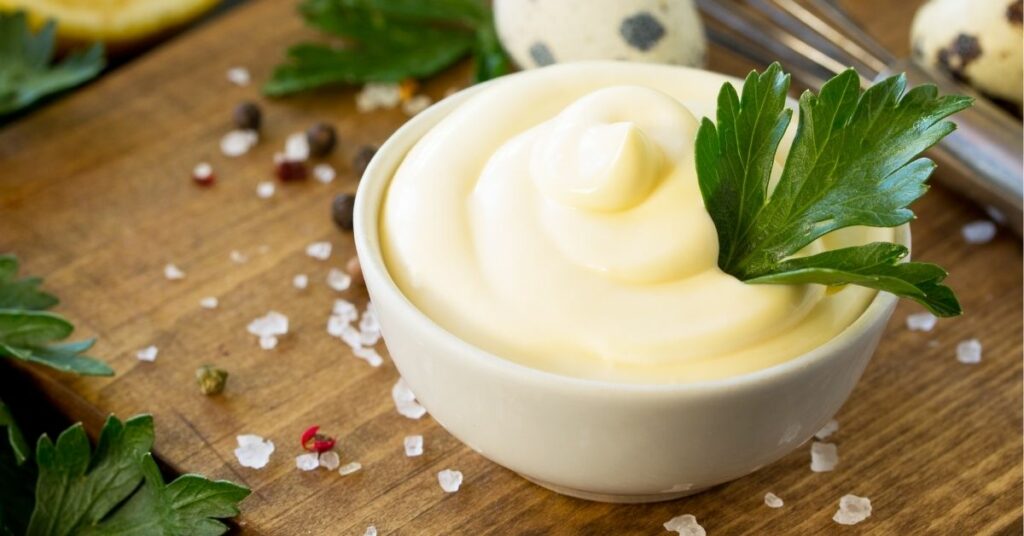- Mayo, short for mayonnaise, is a popular condiment used in various culinary applications. It is commonly used as a spread on sandwiches, a base for salad dressings, and as an ingredient in various recipes. However, for individuals who follow a dairy-free diet or have lactose intolerance, the question arises: Is mayo dairy-free? In this comprehensive guide, we will delve into the ingredients of mayo, its production process, and explore various options available for those seeking a dairy-free alternative.
- Mayonnaise is traditionally made by emulsifying egg yolks, oil, vinegar or lemon juice, and seasonings. These ingredients are mixed together vigorously to create a thick and creamy consistency. The key ingredient in mayo that raises concerns for dairy-free individuals is the egg yolk. Eggs are considered a dairy-free product as they are not derived from milk. However, some people with dairy allergies may also have egg allergies, so it is essential to consider this when determining if mayo is suitable for a specific dietary restriction.
- When it comes to commercially produced mayonnaise, the ingredients can vary depending on the brand. While the basic recipe for mayo does not include dairy, some brands may incorporate dairy-derived ingredients or additives. For individuals who are lactose intolerant or strictly following a dairy-free diet, it is crucial to carefully read the ingredient labels before purchasing a specific brand of mayo.
- To determine if mayo is dairy-free, it is essential to examine the ingredient list on the product packaging. Ingredients such as eggs, oil, vinegar or lemon juice, and seasonings are expected to be present in traditional mayo. However, some brands may add milk solids, whey, or other dairy-derived ingredients to enhance the flavor or texture. These additions can make the mayo unsuitable for those avoiding dairy products.
- Fortunately, there are many dairy-free alternatives available in the market for individuals who cannot consume traditional mayo. Several brands produce vegan mayo, which replaces the egg yolk with plant-based ingredients to create a creamy and dairy-free product. Vegan mayo often uses ingredients like aquafaba (the liquid from canned chickpeas), soy protein, or plant-based oils to achieve the desired texture and taste.
- In addition to store-bought options, making homemade dairy-free mayo is also an alternative. There are numerous recipes available online that use substitutes for eggs, such as tofu, silken tofu, or aquafaba, to create a creamy and dairy-free mayo. These homemade versions allow individuals to have control over the ingredients used and customize the flavor to their liking.
- When dining out or ordering food, it is essential to communicate any dietary restrictions to ensure the mayo used in dishes or sandwiches is dairy-free. Some restaurants and food establishments may use homemade mayo or specific brands that cater to dairy-free options. By asking questions and clarifying the ingredients used, individuals can make informed choices about their meals.
- It is worth noting that individuals who have severe allergies or intolerances should exercise caution, as cross-contamination is possible. Mayo may be prepared in kitchens where dairy-containing products are also handled, leading to potential traces of dairy. If an individual’s allergy or intolerance is severe, it is advisable to consult with the restaurant staff or manufacturer for more information about their manufacturing processes and potential allergen risks.
- In conclusion, mayo can be dairy-free depending on the brand and specific product. While traditional mayo is made with eggs, oil, vinegar or lemon juice, and seasonings, some brands may incorporate dairy-derived ingredients. Therefore, individuals who follow a dairy-free diet or have lactose intolerance should carefully read the ingredient labels and opt for mayo brands that do not contain any dairy additives. Alternatively, there are numerous dairy-free options available, including vegan mayo and homemade recipes. By exploring these alternatives and communicating dietary restrictions when dining out, individuals can enjoy the creamy goodness of mayo without compromising their dietary needs.
Latest posts by Tatyana Dyachenko (see all)
- Pet-Approved CBD: A Fun Review of Just CBD’s Treats and Tinctures for Cats and Dogs - September 6, 2024
- Citrus Freak Show Marijuana Strain - September 22, 2023
- Is Mayo Dairy-Free? - July 14, 2023

